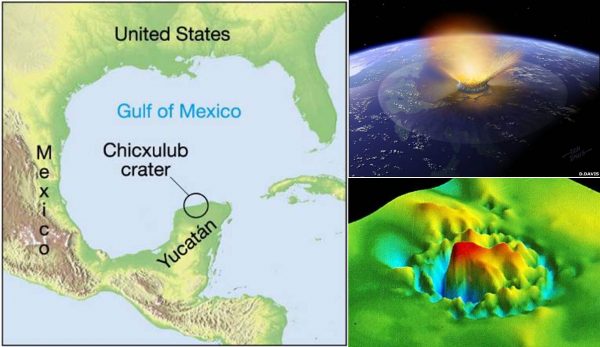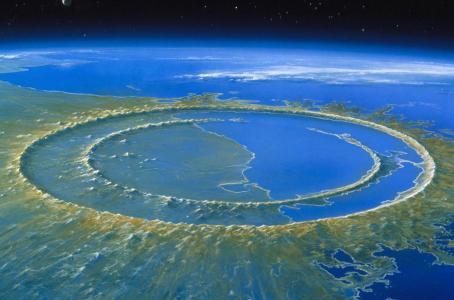A photograph taken from space by NASA revealed part of the history that occurred 66 million years ago with the fall of a meteorite in Chicxulub, Yucatán
Mérida, Yucatán, (November 25, 2021).- More than 66 million years ago, the Yucatán Peninsula, to be exact the Chicxulub port, was the scene where a meteorite fell that not only changed history but also destroyed a species that dominated the world, the dinosaurs.
The meteorite was approximately 14 kilometers wide, which generated a great explosion when it fell, as well as creating a large crater of approximately 180 kilometers and bodies of water that are known today as cenotes.
Suspended limestone offshore hints at a 66-million-year-old story. https://t.co/WKrFe44XX4
— NASA Earth (@NASAEarth) November 22, 2021
NASA recalled that the Chicxulub crater, which is now partially on land, is the best-preserved high-impact crater on Earth and has been buried under thick layers of limestone, however, the remains of the crater are still visible in the surface.
Through a photograph, it is detailed that in front of the Yucatan coast there is an arc of 250 kilometers of sinkholes that marks the edge of the crater and, since it lacks water, it can be seen from Space.

“Because the rainwater is slightly acidic, the surface water dissolves the limestone bedrock and infiltrates it, creating dissolution wells, cenotes and caves, as well as the longest underground river in the world”, same that made known a few weeks ago by the environmental authorities of the entity.
It is detailed that when those large layers of limestone erode, the calcareous sediments are washed away in the wide and shallow Yucatan shelf, so the natural color image, sediment eddies are visible off the north and west coast from the Bay of Campeche.
En esta imagen en color natural de @NASAEarth, los remolinos de sedimentos visibles frente a la costa de Yucatán 🇲🇽 permiten entrever una historia de 66 millones de años. https://t.co/KQVYLfjxXJ pic.twitter.com/RqhURDxbxY
— NASA en español (@NASA_es) November 23, 2021
The photograph shows how the sediments scatter light and this reflectivity gives the water its characteristic color when viewed from space.
“When it floats close to the surface, the sediment appears dark brown, but as it sinks and disperses, the color changes to shades of green and light blue. When shallow coastal waters are stirred by winds, tides, storms or currents, the sediments on the seabed can become suspended again, ”he explains.
Source: Yucatan a la mano
TYT Newsroom


